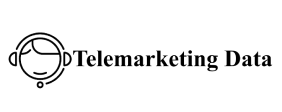In the world of sales and marketing, not all leads are created equal. Knowing the difference between cold leads and warm leads can drastically improve how you approach your prospects and increase your chances of closing deals. Both types of leads require different strategies, communication styles, and levels of effort. Misunderstanding this difference can lead to wasted resources and missed opportunities. This article breaks down what cold and warm leads are, how to identify them, and why distinguishing between the two is essential for any successful lead generation strategy.
What Are Cold Leads?
Cold leads are individuals or businesses who job function email list have had no previous interaction with your company or brand. They are not familiar with your product or service and likely have no expressed interest in what you offer. These leads typically come from purchased lists, web scraping, or initial outreach campaigns like cold calling or unsolicited emails.
Engaging cold leads often requires an introductory approach. The goal is to spark interest by presenting a compelling value proposition and establishing trust. It’s important to avoid being overly aggressive, as this can quickly turn a cold lead into a lost opportunity. Cold leads usually sit at the top of the sales funnel and need to be nurtured with information and value before moving forward in the buyer’s journey.
What Are Warm Leads?
Warm leads, on the other hand, are prospects who building loyalty through lead nurture sequences have already shown some level of interest in your brand. They might have visited your website, downloaded a resource, subscribed to your newsletter, or engaged with your social media content. Warm leads are considered more qualified than cold ones because they are aware of your brand and may already be exploring solutions you offer.
Warm leads respond better to personalized messages and direct engagement. They’re further down the sales funnel and require less education about your offerings. The focus with warm leads is to build on the existing interest and guide them toward making a purchase decision, often through targeted follow-ups, demos, or consultations.
Why the Difference Matters in Lead Strategy
Understanding whether a lead is cold or warm shapes the entire outreach strategy. With cold leads, your messaging should focus on brand awareness, education, and initial value delivery. For warm leads, the focus shifts to addressing specific needs, answering objections, and presenting solutions tailored to their interests.
This distinction also impacts marketing automation workflows, email sequences, and sales team efforts. Treating a cold lead like a warm one—or vice versa—can result in low engagement and lost trust. By segmenting leads correctly, businesses can allocate resources more effectively and increase conversion rates.
Final Takeaway: Tailor Your Approach to Lead Temperature
Recognizing and adapting to the temperature review business of your leads—cold or warm—is crucial for any successful sales or marketing campaign. It’s not just about reaching out; it’s about reaching out in the right way. Cold leads need nurturing, while warm leads need guidance toward the next step. By aligning your outreach strategy with the type of lead you’re targeting, you improve engagement, increase trust, and ultimately close more deals. Always assess lead readiness before diving into sales conversations, and you’ll see better results from your efforts.

